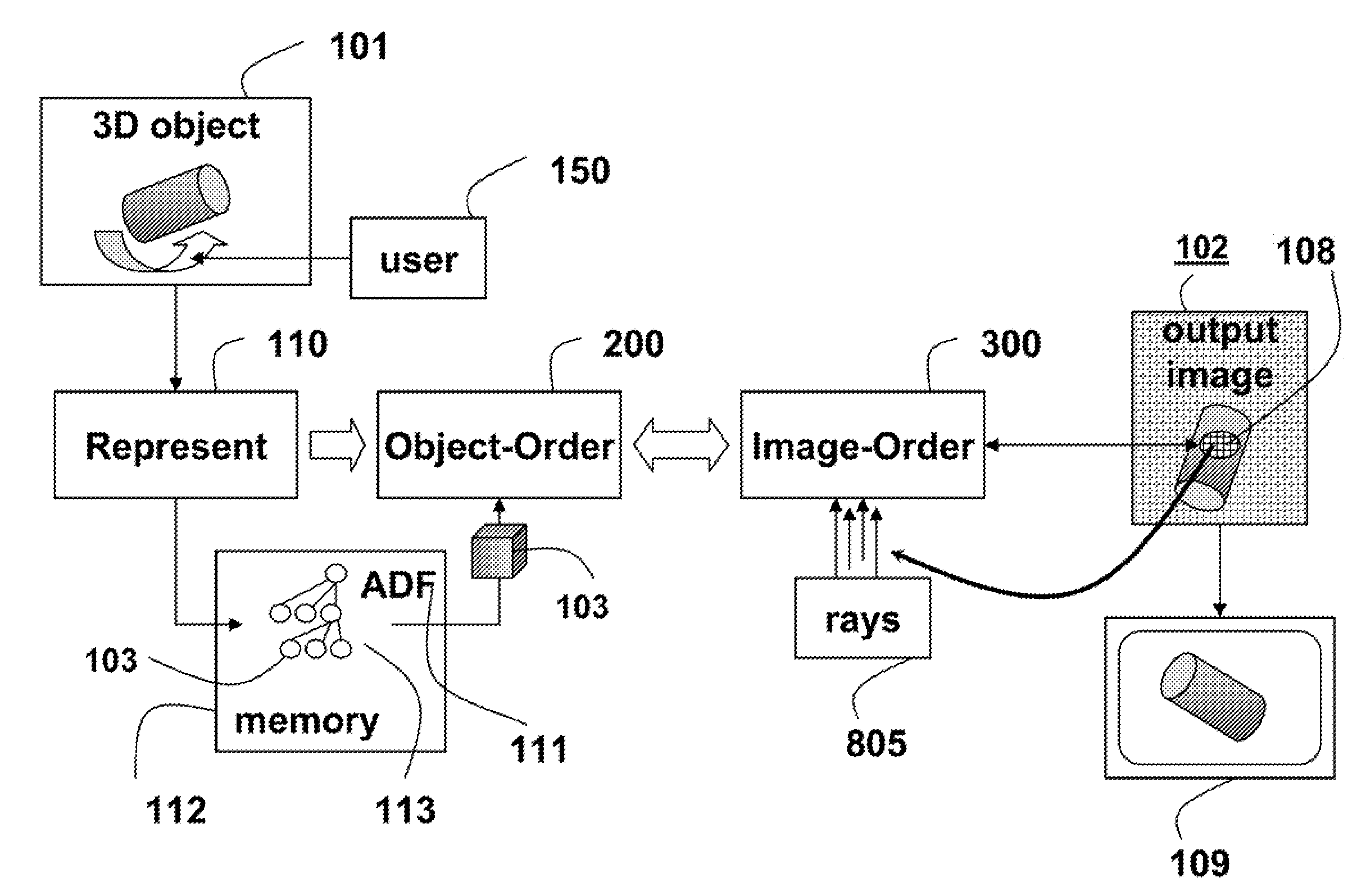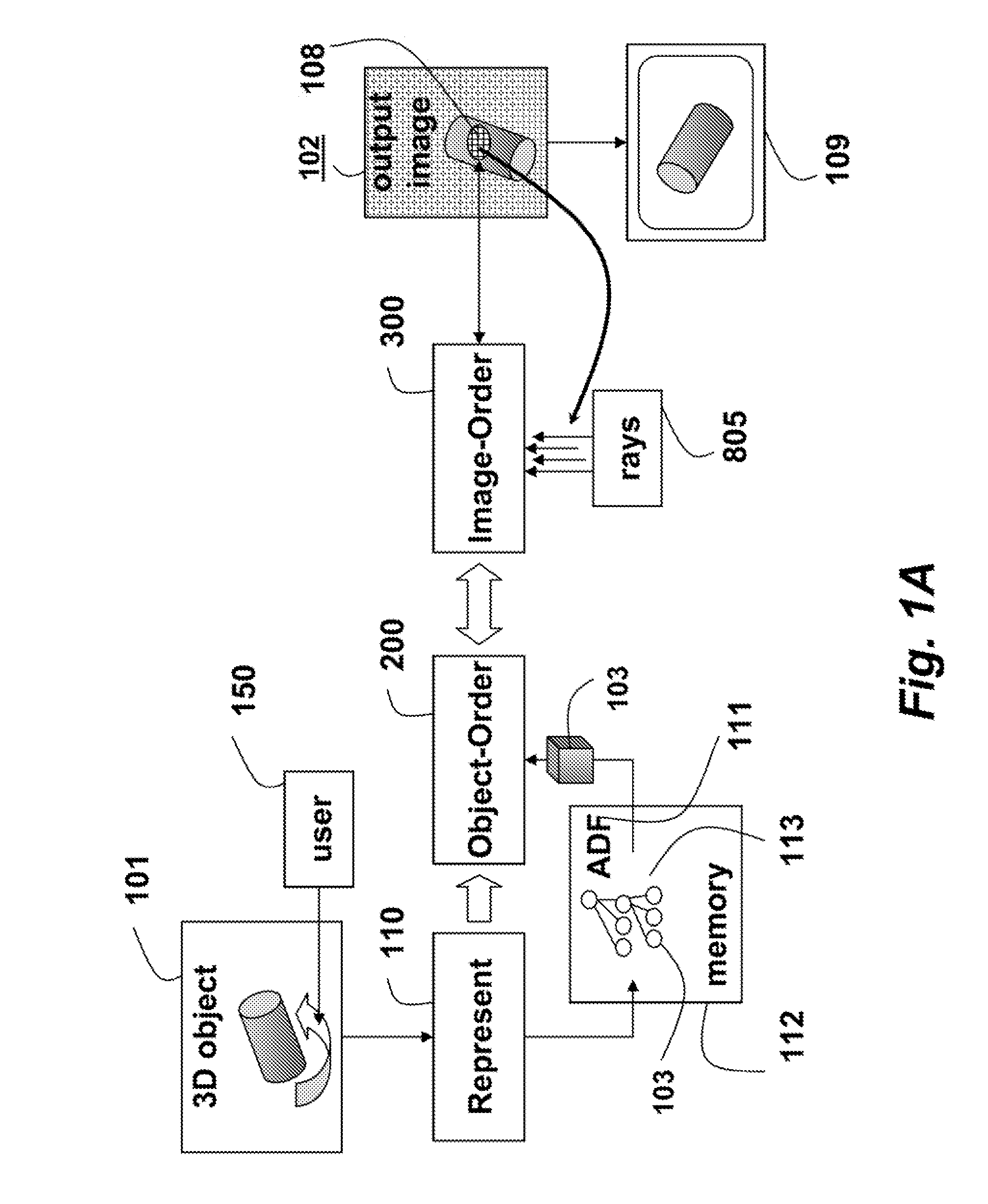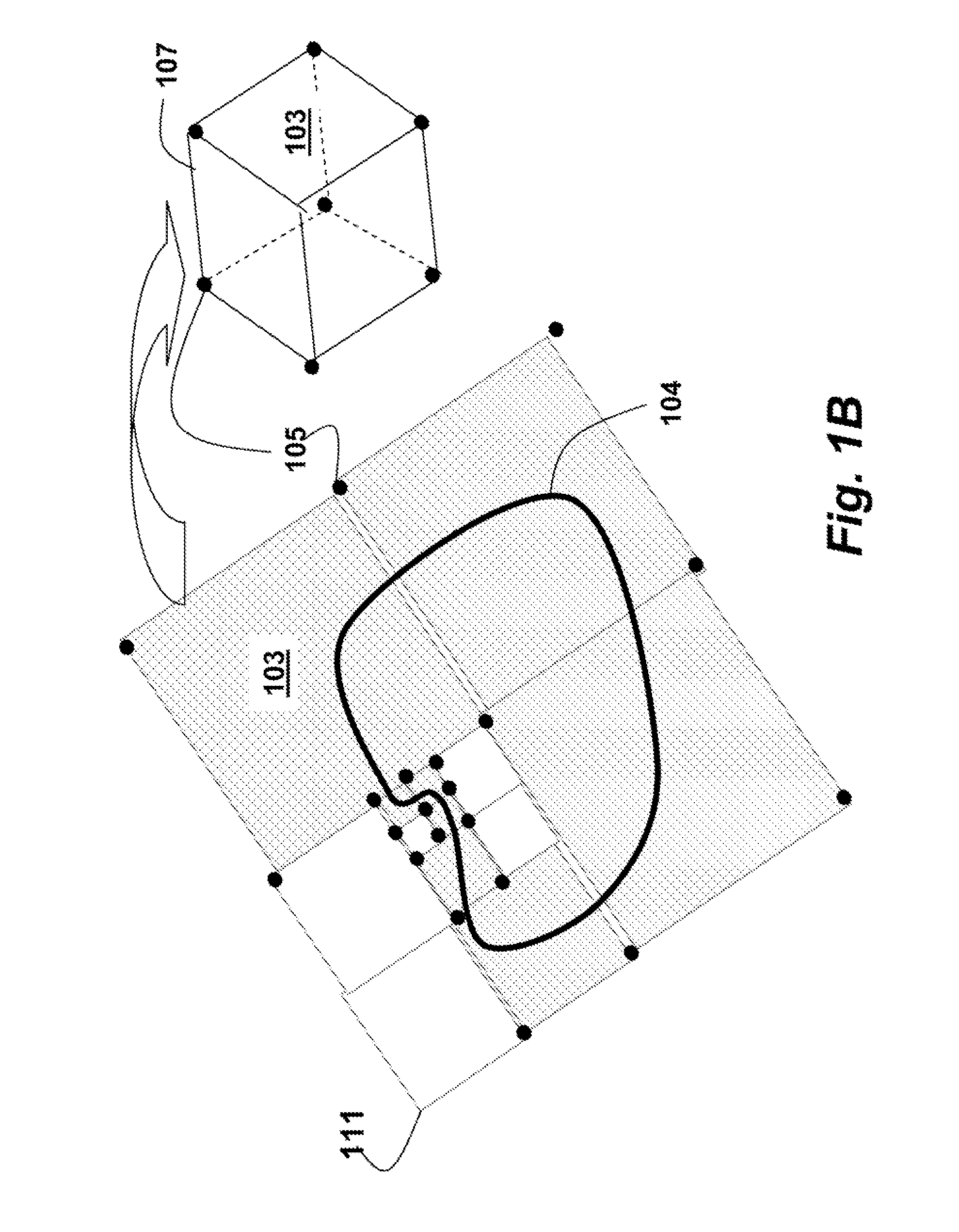Method and System for Rendering 3D Distance Fields
- Summary
- Abstract
- Description
- Claims
- Application Information
AI Technical Summary
Benefits of technology
Problems solved by technology
Method used
Image
Examples
Embodiment Construction
[0045]Method and System Overview
[0046]As shown in FIGS. 1A-1B, the embodiments of our invention provide a method for rendering a 3D model 111 of a 3D object 101 as an output image 102. The rendering can be to a display or print device 109, or a memory. FIG. 1A shows the method and FIG. 1B shows a cell-based data structure. The rendering can simulate machining operations such as performed by a milling machine, as shown in FIG. 9.
[0047]In one embodiment of the invention, the model represents the object as a 3D adaptively sampled distance field (ADF) stored in a memory 112 of a computer system as an octree 113. However, in general, the model can be any distance field structurally represented as a space partitioning data structure, for example a k-dimensional tree, or an octree. Additionally, the distance field can be reconstructed from distance field samples, or determined analytically by, for example, a continuous function.
[0048]When the distance field is stored in an octree data stru...
PUM
 Login to View More
Login to View More Abstract
Description
Claims
Application Information
 Login to View More
Login to View More - R&D
- Intellectual Property
- Life Sciences
- Materials
- Tech Scout
- Unparalleled Data Quality
- Higher Quality Content
- 60% Fewer Hallucinations
Browse by: Latest US Patents, China's latest patents, Technical Efficacy Thesaurus, Application Domain, Technology Topic, Popular Technical Reports.
© 2025 PatSnap. All rights reserved.Legal|Privacy policy|Modern Slavery Act Transparency Statement|Sitemap|About US| Contact US: help@patsnap.com



